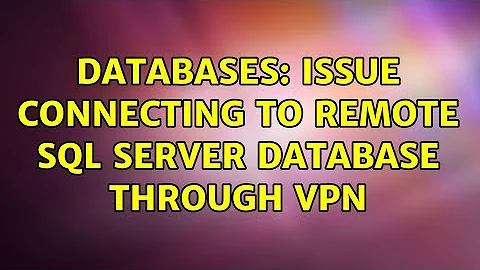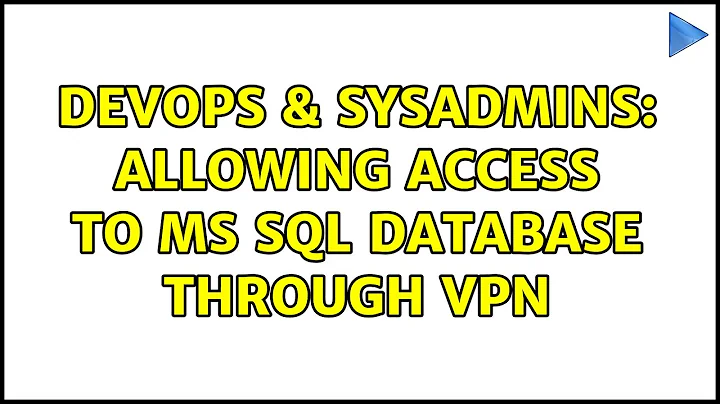Allowing access to MS SQL database through VPN
Azure SQL Database, before V12, used a gateway machine to proxy connections between a client and database. Since V12, the gateway only proxies the initial connection, and then establishes a peer-to-peer connection between the client and database. Some more info on this redirection can be found here.
This behaviour doesn't play well with port-forwarding the connection, since the peer-to-peer connection will be established outside of the proxy and hit the firewall. Thankfully, it can be turned off, albeit with a reliance on Powershell.
Related videos on Youtube
Xyene
Updated on September 18, 2022Comments
-
Xyene over 1 year
My setup involves a Microsoft Azure VM instance running Server 2012, connected to a Azure SQL Database V12 server on another instance.
I've set up an SSTP VPN on the server, and it works. Clients connecting to it do not use the server gateway, since its purpose is to host network shares and not to proxy traffic. The database server is set to refuse connections from anything but the VPN server.
I would like to have the database accessible through the VPN, but am having trouble routing the traffic from the VPN server to the database — specifically, I'd like to have the database accessible on
192.168.26.1. I've opened port 1433, and added a TCP port forward with:netsh add v4tov4 listenaddress=192.168.26.1 listenport=1433 connectaddress=<database hostname> connectport=1433When I attempt to connect to the database through
192.168.26.1on a client machine,netstaton the VPN server shows:> netstat -an | findstr 1433 TCP 10.0.0.4:51056 <database ip>:1433 TIME_WAIT TCP 192.168.26.1:1433 0.0.0.0:0 LISTENINGSimilarly,
netstaton the client (a Windows 10 machine) shows a brief connection to192.168.26.1:1433.From this, I am led to believe the connection to the database is being made through the VPN, however when attempting to connect to the database through the
192.168.26.1proxy, SSMS says:Your client IP address does not have access to the server. Sign in to an Azure account and create a new firewall rule to enable access.
Following the instructions leads Azure to wanting to add my client IP to an allowed firewall rule. However, shouldn't the connection have been made through the VPN?
netstatseems to say so, so why am I being asked to add my client IP?For my SQL credentials, I use
192.168.26.1as the server name, and<username>@<database hostname>as the login. This works from a Remote Desktop Connection on the VPN server.What's going on?





